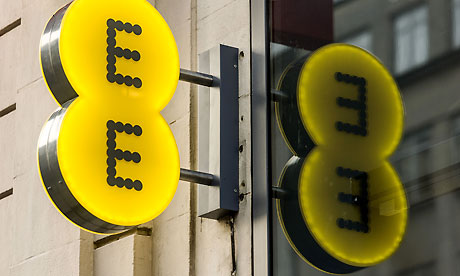The UK’s largest mobile network and only LTE operator, EE, has reported a 4.4 per cent drop in service revenue for the second quarter year on year, to £1.42bn. But the firm’s EBITDA margin for the first half of 2013 rose 2.6 per cent year on year to 22.9 per cent. The firm attributed its top line drop to regulatory measures affecting mobile termination rates and roaming revenues, without which service revenue would have been flat year on year for the second quarter, it said.
July 24, 2013

The UK’s largest mobile network and only LTE operator, EE, has reported a 4.4 per cent drop in service revenue for the second quarter year on year, to £1.42bn. But the firm’s EBITDA margin for the first half of 2013 rose 2.6 per cent year on year to 22.9 per cent. The firm attributed its top line drop to regulatory measures affecting mobile termination rates and roaming revenues, without which service revenue would have been flat year on year for the second quarter, it said.
The firm’s focus on mobile broadband and its early launch of LTE is paying dividends, it said. More than half of its customer base is now on post paid contracts which generate six times the ARPU of prepaid customers. LTE now accounts for 56 per cent of new and upgrading customers, and migrated LTE subscribers generate on average ten per cent additional ARPU.
Non-voice services now account for 55 per cent of all revenues, while non-messaging data accounts for 41 per cent, EE said.
“Today’s results demonstrate our success in building our new brand and differentiating our network to drive commercial momentum while continuing to deliver cost savings to increase our margin performance,” said CEO Olaf Swantee. “We’ve doubled the rate at which we’re adding 4G customers and doubled our 4G speeds across 15 cities to deliver the world’s fastest network for our customers – indoors, outdoors and on key commuter routes.”
John Delaney, associate VP for mobility at IDC, said that EE’s results compared favourably with large European operators, particularly those (including part owner Orange) that are exposed to Southern European markets. He described the upturn in margin as a “strong improvement”. The closure of 130 stores in the firm’s retail footprint and “ongoing progress in network rationalisation” were “particularly noteworthy cost reductions,” he said, and described the ten per cent ARPU uplift from LTE as “quite good”.
Delaney added that there is continued speculation around a possible sale of all or part of the business by owners Orange and Deutsche Telekom. While the parent companies could benefit from a cash injection, he said, “one gets the impression, too, that EE’s management would relish a greater degree of independence and autonomy.”
About the Author(s)
You May Also Like







.png?width=300&auto=webp&quality=80&disable=upscale)

.png?width=300&auto=webp&quality=80&disable=upscale)
_1.jpg?width=300&auto=webp&quality=80&disable=upscale)



.png?width=800&auto=webp&quality=80&disable=upscale)